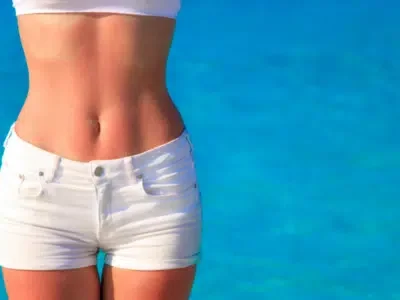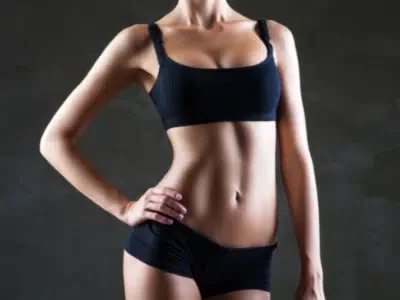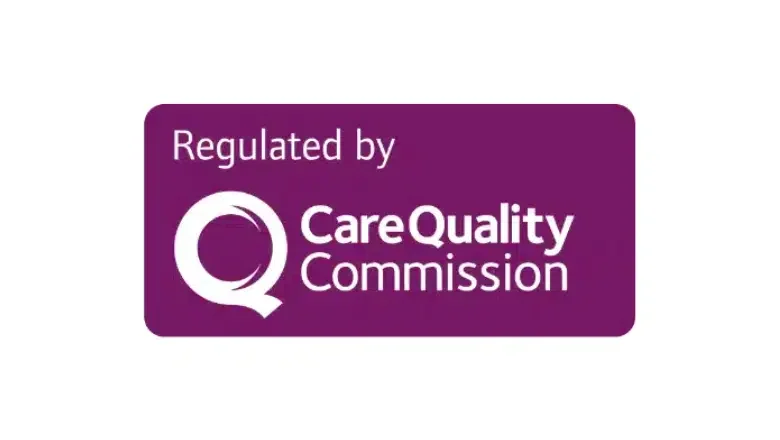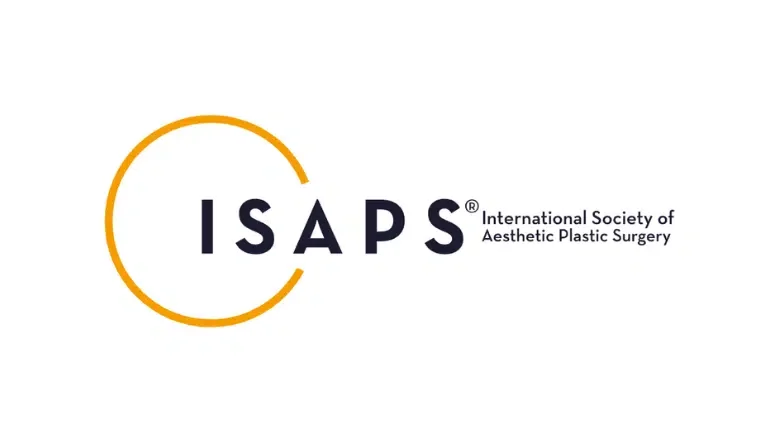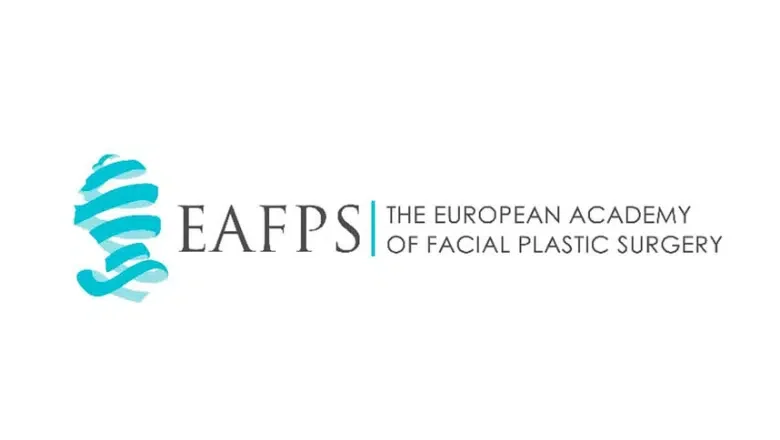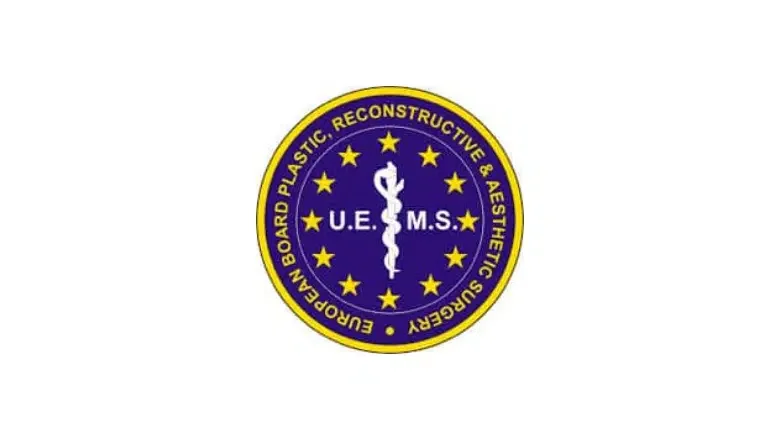Umbilicoplasty London UK
Enhance your abdominal aesthetics with Belly Button Surgery – the specialised procedure designed to reshape and rejuvenate your belly button for a more balanced and attractive appearance.
Umbilicoplasty, commonly referred to as belly button surgery, is a surgical intervention aimed at transforming an “outie” belly button into an “innie” one. The navel or umbilicus, also known as the belly button, is a depression in the skin resulting from the detachment of the umbilical cord. Generally, this indentation is referred to as an “innie.” However, in some cases, an “outie” forms, characterised by outward-protruding skin rather than a concave shape. This may lead to self-confidence and body image issues for some individuals. If you find yourself in this situation, umbilicoplasty or belly button surgery could be a suitable solution. Additionally, our surgeons can repair navels affected by piercings or those needing the creation of a new belly button following emergency abdominal surgery. In some instances, patients may have an underlying umbilical hernia, which can be addressed simultaneously with the umbilicoplasty.
Umbilicoplasty is a specialised procedure aimed at modifying the belly button’s appearance to enhance its visual appeal. Our experienced surgeons are skilled in performing various levels of complexity in belly button surgery.
This procedure can be conducted as a standalone operation or in conjunction with other surgeries, such as a tummy tuck or umbilical hernia repair.
RELATED: What Happens to the Belly Button in a Tummy Tuck?
Various factors, including ageing, pregnancy, weight fluctuations, injuries, or hernias, can impact the appearance of your belly button. A typical navel appears small and vertical. Umbilicoplasty can modify the belly button to achieve a more aesthetically pleasing appearance.
If you have concerns about the look of your navel, umbilicoplasty or belly button surgery can be a viable option to address these issues at our specialised cosmetic surgery clinic in London.
What is Umbilicoplasty?
Umbilicoplasty, also known as belly button surgery or navel reshaping, is a surgical procedure that alters the appearance, size, or shape of the navel (umbilicus). It is often performed for cosmetic reasons to improve the aesthetic appeal of the navel or to correct deformities that may have resulted from previous surgeries or congenital issues. Umbilicoplasty can be performed on its own or as part of other abdominal procedures, such as abdominoplasty (tummy tuck) or body contouring after significant weight loss.
Why Get Umbilicoplasty
Umbilicoplasty, a specialised cosmetic surgery, offers a unique solution for individuals who are self-aware or uncomfortable with the appearance of their belly button. This procedure encompasses a variety of benefits, tailored to meet the diverse needs and concerns of patients. Whether it’s the shape, size, or overall look of the navel that’s causing discomfort, umbilicoplasty provides a pathway to increased confidence and satisfaction with one’s abdominal appearance.
One common motivation for undergoing umbilicoplasty is the desire to change a protruding belly button, often referred to as an ‘outie’, into a more inwardly shaped ‘innie’. This adjustment can significantly alter the belly button’s appearance, offering a more traditional look that many find desirable. Additionally, individuals seeking to address and eliminate scars from previous piercings or surgeries find solace in umbilicoplasty. The procedure expertly removes these marks, restoring a smoother, more uniform appearance to the navel area.
Umbilical hernias, characterised by a noticeable bulge near or in the belly button, can also be corrected through this surgery. Often painless, these hernias nonetheless require professional intervention to prevent potential complications. Umbilicoplasty not only repairs the hernia but also enhances the cosmetic appeal of the belly button.
Significant life events such as pregnancy or considerable weight loss can lead to changes in the belly button’s size, making it appear larger or more stretched. Umbilicoplasty offers a corrective measure, allowing for the reduction and reshaping of the navel to achieve a more proportionate and aesthetically pleasing appearance. Additionally, for those who have experienced traumatic injuries affecting the belly button, umbilicoplasty can repair the physical damage, restoring its original form and function.
Furthermore, individuals who have undergone previous abdominal surgeries may find that the results have left their belly button looking altered or misshapen. Umbilicoplasty serves as an effective corrective procedure to address these issues, ensuring that the belly button complements the overall appearance of the abdomen.
Belly Button Surgery Before and After Photos
At Centre for Surgery, we only show photos of our patients that have given written consent allowing use of their images on our website.
Case 1:


Case 2:

Case 3:

Case 4:
Case 5:
Case 6:
Case 7:
Case 8:
Benefits of Belly Button Surgery
Umbilicoplasty, also known as belly button surgery, is a cosmetic surgical procedure that involves reshaping and/or repositioning the belly button to improve its appearance. Some of the benefits of umbilicoplasty surgery include the following:
Improved Appearance
Umbilicoplasty can improve the appearance of the belly button, making it more aesthetically pleasing and balanced with the surrounding abdomen.
Corrects Imperfections
Umbilicoplasty can correct imperfections such as an outie belly button, excess skin, scars, or deformities caused by previous surgeries.
Boosts Confidence
Many people feel self-conscious about the appearance of their belly button, and umbilicoplasty can help boost their confidence and self-esteem.
Quick and Safe Procedure
Umbilicoplasty is a relatively quick and safe procedure that can be performed on an outpatient basis under local anaesthesia.
Minimal Downtime
Recovery time for umbilicoplasty is usually short, with most patients able to return to work and normal activities within a few days.
Long-lasting Results
The results of umbilicoplasty are usually long-lasting, with the new appearance of the belly button remaining stable over time.
Who is a Good Candidate for Umbilicoplasty?
Umbilicoplasty, a specialised form of cosmetic surgery, is designed to address various concerns related to the appearance of the belly button. At Centre for Surgery, our expert plastic surgeons conduct thorough consultations to assess the suitability of individuals for this transformative procedure. Candidates for umbilicoplasty often present a range of issues that affect their confidence and satisfaction with their abdominal aesthetics.
Individuals may seek umbilicoplasty for several reasons, including the desire to remove scarring that has resulted from piercings. Such scars can mar the appearance of the belly button, making this procedure an attractive option for those looking to restore its natural look. Additionally, significant weight loss can lead to lax skin around the navel area, prompting individuals to consider umbilicoplasty to tighten and rejuvenate their abdominal profile.
Pregnancy is another common factor that alters the appearance of the navel, often leaving women with stretched or misshapen belly buttons post-delivery. Umbilicoplasty can effectively address these changes, offering a route to reclaiming the pre-pregnancy appearance of the belly button. Moreover, individuals with an ‘outie’ belly button caused by an umbilical hernia may also find umbilicoplasty beneficial in achieving a more traditional ‘innie’ appearance, alongside the necessary hernia repair.
How to Prepare For Belly Button Surgery
Preparing for belly button surgery, also known as umbilicoplasty, is an essential step to ensure the best possible outcome and minimise the risk of complications. The following are some general guidelines on how to prepare for belly button surgery:
Choose a qualified and experienced surgeon
Research and choose a certified plastic surgeon who specialises in umbilicoplasty. Check their credentials, reviews, and before-and-after photos to ensure they have the necessary expertise and experience to perform the surgery safely and effectively.
Consultation with your surgeon
Schedule a consultation with your surgeon at Centre for Surgery to discuss the surgery’s details, your desired outcome, and any potential risks or complications. Your surgeon will examine your navel, take photographs, and provide personalised advice on how to prepare for the procedure.
Stop smoking and avoid certain medications
Smoking can increase the risk of complications and delay the healing process. Your surgeon may advise you to stop smoking for at least a month before and after surgery. You should also avoid certain medications, such as aspirin, non-steroidal anti-inflammatory drugs (NSAIDs), and blood-thinning medications, which can increase the risk of bleeding.
Follow preoperative instructions
Your surgeon will provide specific pre-operative instructions, such as fasting for a certain period before surgery, avoiding alcohol, and arranging for someone to drive you home after the surgery. Following these instructions is crucial to ensure your safety and the success of the surgery.
Arrange for postoperative care
You will need someone to drive you home after the surgery and stay with you for at least 24 hours. Arrange for someone to help you with daily activities, such as cooking, cleaning, and taking care of children or pets, for the first few days after surgery. Also, prepare a comfortable recovery area with pillows, blankets, and entertainment to help you rest comfortably during your recovery.
Stock up on supplies
Before the surgery, stock up on supplies you may need during your recovery, such as pain medication, compression garments, and wound care products. Your surgeon will provide specific recommendations based on your individual needs.
Follow a healthy lifestyle
Eating a healthy diet, staying hydrated, and getting enough rest can help promote optimal healing and reduce the risk of complications.
Umbilicoplasty Procedure
The umbilicoplasty procedure can vary depending on the specific goals and needs of the patient. However, the following is a general outline of the steps involved in a typical umbilicoplasty surgery:
Anaesthesia
Umbilicoplasty is typically performed under local anaesthesia with or without sedation, but general anaesthesia may be used in some cases or when combined with other procedures. An anaesthetist will administer the appropriate anaesthesia to ensure the patient’s comfort and safety during the surgery.
Marking and incision
The surgeon will mark the navel and surrounding area to guide the incision and plan the modifications. They will then make a small incision around the navel, which can vary in shape and size depending on the specific goals of the surgery. Common incision patterns include a semicircular, circular, or inverted V shape.
Reshaping the navel
The surgeon will carefully dissect the skin and underlying tissue from the navel to gain access to the area that needs modification. They will remove any excess skin, fat, or tissue as needed to achieve the desired shape and size. If a hernia is present, the protruding tissue will be pushed back into the abdominal cavity, and the defect in the abdominal wall will be repaired with sutures or mesh.
Repositioning the navel
The surgeon will then reposition the navel, adjusting its shape, size, and location to create a more aesthetically pleasing appearance. This can involve moving the navel higher or lower on the abdominal wall or changing its orientation or depth.
Closing the incision
Once the desired modifications have been made, the surgeon will carefully suture the skin back together around the navel. They may use dissolvable sutures, which the body will absorb over time, or non-dissolvable sutures that need to be removed later. The surgeon may also apply surgical glue or adhesive strips to help hold the incision closed.
Dressing and postoperative care
After the surgery is complete, the surgeon will apply a sterile dressing and compression garment to help reduce swelling and support the healing process. The patient will be given instructions on how to care for the incision site, as well as any necessary pain medication or antibiotics to prevent infection.
Recovery After Umbilicoplasty Surgery
Recovery after umbilicoplasty surgery is generally quicker and less complicated than more invasive abdominal procedures. However, every individual’s healing process may vary. The following is a general outline of what to expect during recovery from umbilicoplasty surgery:
Pain management
Mild to moderate discomfort is normal in the first few days following the surgery. Your surgeon will likely prescribe pain medication to help manage any pain. Over-the-counter pain relievers, such as acetaminophen, may also be recommended, but always follow your surgeon’s advice regarding pain management.
Swelling and bruising
Some swelling and bruising around the navel area are common after umbilicoplasty. Wearing a compression garment, as recommended by your surgeon, can help reduce swelling and support the healing process. Swelling and bruising typically subside within a few weeks.
Incision care
To prevent infection, the incision site must be kept clean and dry. You will be given specific instructions on how to clean the area and when you can shower or bathe. If non-dissolvable sutures were used, your surgeon would need to remove them, typically within one to two weeks after surgery.
Activity restrictions
You can usually return to light daily activities within a week after surgery. However, strenuous exercise, heavy lifting, and activities that may strain the abdominal area should be avoided for at least 4-6 weeks or as your surgeon advises. It is crucial to follow your surgeon’s guidance regarding when you can resume specific activities to ensure proper healing and minimise complications.
Follow-up appointments
You will have follow-up appointments with your surgeon to monitor your healing progress and address any concerns. These appointments are essential to ensure a successful recovery and the best possible outcome.
Scar management
Some scarring is inevitable after umbilicoplasty, but the scars typically fade and become less noticeable over time. Your surgeon may recommend topical treatments or silicone sheets to help minimize scarring. Protecting the scar from sunlight is also crucial, as sun exposure can cause darkening and thickening of the scar.
Umbilicoplasty London Prices & Costs – How much is Belly Button Surgery in London?
There are several factors which will determine the overall cost of the belly button reshaping procedure, and the final quotation will be given after a face-to-face consultation with your specialist plastic surgeon.
- Type of umbilicoplasty – skin only or combined with umbilical hernia repair
- Umbilicoplasty combined with another procedure
- Local anaesthetic or general anaesthetic
- Primary or revision umbilicoplasty
Why not call us on 0207 993 4849 and speak to one of our expert patient coordinators who may be able to give you a rough costing prior to a consultation for umbilicoplasty?
Always remember that price should never be the determining factor when choosing a plastic surgeon for your belly button surgery procedure. We feel that safety and quality of service should be your number one priority and instil in you the confidence that our team will look after you before, during and after your procedure to the best of their ability.
What is included in my treatment package?
- As many preoperative consultations with your surgeon as you like to make sure the procedure is right for you
- Treatment at a specialist day surgery facility recently rated ‘Good’ by the CQC
- Enhanced same-day discharge with the added benefits of recovering in your own home
- 24/7 clinical support from your surgeon for the first 48 hours and our expert postoperative support team
- Your very own dedicated patient coordinator
- In-depth preoperative medical assessment to make sure you are fully fit for the umbilicoplasty procedure
- Exceptionally high standards of postoperative care described as ‘outstanding’ by the CQC with regular telephone and face-to-face checks by our expert postoperative support team
Enhancing Aesthetic Outcomes: The Synergy of Umbilicoplasty with Abdominoplasty and Mummy Makeovers
The strategic combination of umbilicoplasty with other procedures such as abdominoplasty and mummy makeovers offers a holistic approach to body contouring, ensuring that the outcomes not only meet but exceed patient expectations.
Umbilicoplasty and Abdominoplasty
Abdominoplasty, widely known as a tummy tuck, is a transformative procedure that meticulously removes excess skin and fat from the abdominal area, thereby sculpting a more toned and defined physique. However, for individuals who also experience dissatisfaction with the appearance of their belly button—be it due to distortion, scarring, or hernias—the addition of umbilicoplasty can significantly enhance the aesthetic results.
The concurrent performance of umbilicoplasty and abdominoplasty is particularly beneficial for patients seeking a complete rejuvenation of the abdominal area. This combination addresses both the contour and the central focal point—the belly button—ensuring a harmonious and pleasing appearance. Opting for these procedures in a single session not only proves to be more cost-effective but also consolidates the recovery period, allowing patients to enjoy their new figure with minimal downtime.
Belly Button Surgery and Mummy Makeover
The concept of a mummy makeover has gained considerable popularity, offering a bespoke series of body contouring procedures tailored to address the unique changes experienced by women post-pregnancy or following significant weight loss. This comprehensive approach typically encompasses liposuction to eliminate unwanted fat, a tummy tuck to remove excess skin and restore abdominal firmness, and breast augmentation to enhance or restore breast volume.
Incorporating belly button surgery, or umbilicoplasty, into the mummy makeover protocol addresses an often-overlooked aspect of post-pregnancy body changes—altering the belly button’s shape and appearance. Pregnancy can significantly impact the belly button’s aesthetics, leading to stretching, distortion, or the development of hernias. By including umbilicoplasty, women can achieve a more thorough and satisfying transformation, ensuring that every element of their abdominal profile is refined and rejuvenated.
Umbilicoplasty at Centre for Surgery
Centre for Surgery is a leading provider of cosmetic and plastic surgery procedures in London, UK. Our team of highly skilled and experienced plastic surgeons, anesthetists, and nurses are dedicated to providing the highest quality of care and achieving exceptional outcomes for our patients.
Our state-of-the-art clinic is equipped with the latest technology and equipment, and we offer a wide range of surgical and non-surgical procedures to help our patients achieve their aesthetic goals. We are committed to ensuring that our patients are fully informed about their options and the risks and benefits of each procedure, and we work closely with each patient to develop a personalized treatment plan that is tailored to their unique needs and goals.
Patient safety and satisfaction are our top priorities. We follow strict safety protocols and guidelines to ensure that our patients receive the highest level of care before, during, and after their procedure. We are committed to providing a comfortable, welcoming, and professional environment where our patients can feel confident and at ease throughout their journey.
Our body contouring surgeons at Centre for Surgery are highly qualified and experienced plastic surgeons who specialise in aesthetic surgery of the breast and body. Here are some reasons why you should choose our surgeons:
GMC Specialist Register
Our surgeons are on the GMC specialist register for plastic surgery, which means they have undergone rigorous training and have met the highest standards for medical practice in the UK.
Membership of UK and European Associations
Our surgeons are full members of the UK Association of Plastic Surgery and the European Association of Plastic Surgery, which demonstrates their commitment to staying up-to-date with the latest techniques and technologies in the field.
Aesthetic Fellowships
Our surgeons have completed aesthetic fellowships in body contouring surgery, which means they have received specialised training in this area and have a deep understanding of the unique challenges and techniques involved.
Reconstructive Surgery Experience
Our surgeons have a strong background in reconstructive surgery, which gives them a unique perspective on body contouring procedures and enables them to achieve the most natural-looking and long-lasting results.
RealSelf Top Doctors: Our surgeons have been recognised as RealSelf Top Doctors, which is an exclusive status awarded to less than 10% of the RealSelf doctor community. This status is earned by achieving consistently high patient satisfaction, providing excellent feedback on expert answers to patient questions, and investing significant time in Q&A and other doctor activities. This recognition is a testament to our surgeons’ exceptional skills and commitment to patient satisfaction.
FAQs
-
What Can I Expect During My Umbilicoplasty Consultation?During your umbilicoplasty consultation, you will engage in a detailed and cooperative dialogue with your surgeon. This conversation is pivotal in ensuring that both you and your surgeon are aligned in terms of expectations and outcomes. You will delve into your medical history to ascertain your suitability for the procedure. Discussing the anticipated results is crucial for establishing clear expectations. Following a thorough understanding of your concerns and goals, your surgeon will craft a tailored treatment plan designed to address your specific needs. This plan is central to achieving the desired aesthetic and functional outcomes.
-
How Do Outie and Innie Belly Buttons Differ?The distinction between an outie and innie belly button boils down to the healing process of the umbilical cord stump after birth. Once the umbilical stump detaches, it leaves behind your permanent belly button, which may either protrude (outie) or recede (innie). About 10% of people end up with outie belly buttons. While the difference between an outie and innie is primarily aesthetic, an outie can sometimes indicate an umbilical hernia. This condition involves a weakness in the abdominal wall that allows intestines to protrude, exerting pressure on the umbilicus. Umbilicoplasty can be employed to correct such issues, enhancing both the function and appearance of the belly button.
-
What is belly button surgery?Belly button surgery, also known as umbilicoplasty, is a cosmetic surgical procedure aimed at improving the appearance of the belly button, or umbilicus. This procedure can be performed to address issues such as an "outie" belly button (where the skin protrudes outward), misshapen or oversized navels, or those affected by piercing or previous surgeries. The surgery can help enhance the aesthetics of the belly button, boosting self-confidence and addressing body image concerns.
Umbilicoplasty can be conducted as a standalone procedure or in conjunction with other abdominal surgeries, such as a tummy tuck (abdominoplasty) or umbilical hernia repair. Factors like aging, pregnancy, weight changes, injuries, or hernias can influence the appearance of the belly button, and this surgery aims to create a more visually appealing navel. -
Can Umbilicoplasty Transform an Outie Belly Button into an Innie?Umbilicoplasty is particularly effective in converting an 'outie' belly button into an 'innie.' This transformation is achieved by addressing the protruding skin or underlying conditions that contribute to the 'outie' appearance. The procedure tailors the navel to create a more traditionally aesthetic 'innie' look, meeting the patient's cosmetic desires and enhancing the overall appearance of the midriff.
-
Am I suitable for Umbilicoplasty?Those who are unhappy with the appearance of their belly button may wish to undergo an umbilicoplasty. Many patients often have a distorted belly button that they wish to reshape often as a result of a previous pregnancy or traumatic injury.
You will need to be at least 18 years old and in good health to have belly button surgery. -
Is belly button surgery permanent?Belly button surgery is designed to permanently reshape the belly button. In many people, the actual shape and position of the belly button may change due to weight gain or loss, pregnancy or loss of abdominal wall muscle tone.
-
Is Umbilicoplasty Performed as an Outpatient Procedure?Yes, umbilicoplasty is conducted as an outpatient procedure, allowing patients to return home the same day. Typically performed under local anaesthesia, the surgery spans approximately 1-2 hours. This minimally invasive approach minimizes downtime and facilitates a more comfortable recovery period, making it a convenient option for individuals looking to enhance the appearance of their belly button without the need for an extended hospital stay.
-
What type of anaesthetic is used for umbilicoplasty?Umbilicoplasty surgery can be performed easily with local anaesthesia. For those who may feel a little nervous, you also have access to TIVA general anaesthesia technique. which means you will be sleep throughout the procedure.
-
What are the potential risks and complications of belly button surgery?Umbilicoplasty is a minimally invasive procedure with a low risk of complications. Potential risks of bellybutton surgery include minor bleeding, localised wound infection, skin breakdown and skin discolouration.
Excessive scarring including keloid formation may be slightly more common in people with darker skin tones. -
Can umbilicoplasty fix an outie belly button?Umbilicoplasty or belly button surgery can easily convert an 'outie' belly button (the skin bulges outward) into an 'innie' (the navel turns inwards for a more pleasing appearance).
-
How long does belly button surgery take to perform?Typically, umbilicoplasty surgery takes about one hour to carry out. If the procedure is combined with umbilical hernia repair, the procedure may take up to 2 hours to perform.
-
What does umbilicoplasty recovery involve?Patients can return to work within 48 hours after their procedure. The recovery time may be longer if you have had a combined umbilicoplasty with umbilical hernia repair.
All patients should avoid lifting heavy weights or young children for the first three weeks after the procedure. -
Does belly button surgery result in visible scars?The incisions involved in umbilicoplasty are meticulously planned to be discreet, typically concealed within the natural contours of the belly button. This strategic approach minimises visible scarring, ensuring that any marks are well-hidden and not easily noticeable. The goal is to enhance the belly button's appearance without leaving overt signs of surgery.
-
Is belly button surgery permanent?The alterations made during a belly button surgery are designed to be permanent, reshaping the navel to achieve the desired aesthetic outcome. However, it's important to note that certain life events, such as significant weight fluctuations, changes in muscle tone, or pregnancy, can impact the appearance of the belly button over time. While the surgery provides a lasting change, these factors can influence the long-term results, suggesting that maintaining a stable weight and lifestyle can help preserve the surgery's effects.
-
Is Belly Button Surgery Possible After Pregnancy?Absolutely. Belly button surgery, or umbilicoplasty, is often sought by women after pregnancy. Pregnancy can significantly alter the appearance and position of the navel, leading to aesthetic concerns. Umbilicoplasty offers a solution to these changes, allowing for the restoration or improvement of the belly button's appearance post-pregnancy. This procedure is a popular choice for those looking to address cosmetic concerns arising from pregnancy-related changes.
-
Is belly button surgery worth it?The satisfaction rates among patients undergoing belly button surgery are high, with many individuals reporting significant improvements in their self-esteem and body image. The ability to address concerns about the size, shape, or appearance of the belly button can lead to profound psychological and aesthetic benefits. Patients often express contentment with their new navel appearance, feeling more confident in their appearance and more comfortable wearing clothing that reveals the midriff. This positive impact on self-perception underscores the value of the procedure for those who have long been self-conscious about their belly button.
-
Can Umbilicoplasty Be Combined with Other Cosmetic Procedures?Umbilicoplasty, the surgical modification of the belly button, offers flexibility by being both a standalone procedure and one that can be seamlessly integrated with other cosmetic and plastic surgeries. A prime example of this integration is its inclusion in a full tummy tuck procedure, where umbilicoplasty enhances the overall aesthetic outcome. Patients interested in combining umbilicoplasty with other surgeries should discuss their goals with their surgeon during the initial consultation. This collaborative approach ensures a holistic strategy is developed, addressing multiple aesthetic concerns in a single surgical journey.
-
Are There Any Alternatives to Umbilicoplasty for Belly Button Reshaping?Currently, umbilicoplasty stands as the only effective method for achieving significant alterations to the appearance of the belly button. This surgical procedure is uniquely designed to address aesthetic and functional concerns related to the navel, offering customised solutions that non-surgical approaches cannot provide. For those seeking to change the shape or appearance of their belly button, umbilicoplasty is the recommended course of action.
What To Expect
The Consultation
After you have decided to learn more about umbilicoplasty, we recommend a face to face consultation with one our expert belly button repair surgeons as a first step in your journey towards achieving an umbilical correction. When you meet with one of our surgeons, your surgeon will take time to listen carefully to what you hope to achieve and give you an expert opinion on what can and cannot be achieved after performing a thorough physical examination of the belly button area. If an umbilical hernia is found, your surgeon will recommend this to be repaired at the same time.
High resolution photographs are taken in a number of views of the belly button from different angles. Your surgeon will also discuss with you the potential risks and complications of umbilicoplasty and what to expect in the postoperative phase during your healing and recovery. It is important to know what medicines you are taking as some medicines can interfere with blood clotting and may need to be stopped. Any history of medical conditions or previous surgery will also be recorded and all the compiled information is used to make a decision on your medical fitness for the umbilicoplasty procedure. After a recommended two week cool off period and provided you are appropriate for the procedure, you can then make an informed decision on whether you would like to proceed with the procedure. If you are unsure on any aspect of the procedure and what it entails then we would invite you to return for as many follow-up consultations with your surgeon as you like to make sure that umbilicoplasty surgery is right for you. The consultation lasts about 45 minutes on average. It may take longer if your procedure is going to be more complex. We would actively recommend coming in for a follow-up consultation to ensure all your questions are answered.
Before Your Procedure
Once you have decided to move forward with umbilicoplasty surgery. Our preoperative assessment team will be in touch to assess your medical fitness prior to coming in on the day of surgery. There are a number of instructions to follow before your procedure including stopping any aspirin containing medicines as these can increase bleeding and ideally stopping smoking. Smokers have a higher risk of slower wound healing as well as more chance of wound complications. On the day of your procedure, you must follow the preoperative fasting guidance which includes no food for 6 hours prior if you are having TIVA anaesthesia. Only clear fluids (water) is allowed up to 2 hours before your procedure.
On The Day of Your Procedure
When you arrive for your umbilicoplasty procedure, you should aim to arrive on time to allow the admission process to proceed smoothly. One of our nurses will formally admit you and will check a number of items including making sure you have your postoperative medications which include pain relief medicines. You will have your vital signs measured including blood pressure and heart rate. The anaesthetist will then meet you to perform a preoperative airway assessment. Finally your surgeon will consent you for the planned procedure followed by a detailed preoperative marking of the areas to be treated. The umbilicoplasty procedure takes about between 1 hour to perform and is easily performed under a local anaesthetic with or without oral sedation to make you feel relaxed. The option of TIVA general anaesthesia is also available if you prefer to be asleep for your procedure. The surgeon will first inject the area around the belly button with local anaesthetic to make the area fully numb. Incisions will then be made to reshape the belly button. The surgeon will aim to place the incisions within natural skin folds where possible. Special sutures are used to anchor the belly button skin to create an 'innie' belly button. Where an umbilical hernia is present, the surgeon may use specialised mesh to block the gap giving rise to the umbilical hernia. The incisions are then closed with sutures and a sterile dressing is applied. After the procedure is complete, you will spend time in our recovery suite where you will be prepared for nurse-led discharge once you have met all the discharge criteria. It is important to have a responsible adult to accompany you home and to look after you for the first 24 hours.
After Your Procedure
Once you are safely at home, you can be assured in having access to our specialist postoperative clinical support team around the clock. You will be given a contact number to contact your surgeon in the first 24 hours after surgery if you have any concerns. An umbilicoplasty procedure is associated with very little in the way of postoperative discomfort although some discomfort is common for the first week after surgery. Bruising should start to subside after 7-10 days. You should avoid intense sunlight after the procedure to reduce the risk of hyperpigmentation in the incisions.
Our postoperative team will look to call everyday for the first 2 weeks after your procedure. This is so we can monitor your levels of comfort and can alert your surgeon if there is any concern. Our proactive approach allows the detection of any potential issues early which results in more effective treatment. You are advised to rest for at least a few days after your umbilicoplasty procedure which will also help with pain control. Heavy exercise should be avoided for at least the first 4 weeks. Our postoperative clinical team will assess you face to face at your 1 week postoperative appointment to ensure healing is progressing normally and the wounds site are healthy. You will be booked for your surgeon follow-up appointment for 6 weeks after your procedure.















